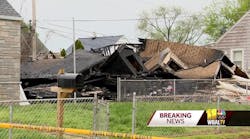from at least 10 states across the country. This gives me an overview of what is going on day to day in the fire service. Here's what I see: Union contracts are negotiated and renegotiated, personnel are laid off and budgets are cut, applications are filed for SAFER grants, firefighters are asked to pay more for benefits, pensions are "reformed," brownouts are ordered, plans for new fire stations and apparatus purchases are canceled, and talks about combining adjacent fire departments are taking place every day.
As fire departments negotiate with their firefighters, ugly things can happen. Who says the economy is getting better? As I write this, the FDNY reports on the potential closing of 20 companies citywide. This bombshell will have quite an impact. This is the worst scenario to hit the FDNY since 900 layoffs were introduced in 1975. In comparison, in the City of Los Angeles, CA, eight engines, five ladders, seven ambulances and three EMS supervisors were browned out to save money. Jersey City, NJ, closes one to four companies per tour. In San Diego, CA, three companies were permanently closed and 10 others close on a rotating monthly basis in groups of five.
Civilian reports of fires, alarms, emergencies and EMS calls are still being received at record rates in many jurisdictions. Who is going to answer the call when a company is blacked out, out of service or unavailable due to a previous response? In many volunteer fire departments across the country, members must take second jobs, work out of town or stay with their children, and this is taking a terrible toll on reliable volunteer response. An adequate number of personnel must arrive and perform firefighting, search and rescue and other vital functions within minutes of the first alarm.
SPEAKING OF RESPONDING MANPOWER, the National Institute of Standards and Technology (NIST) recently released The Report on Residential Fireground Field Experiments, which can be downloaded at http://www.nist.gov/bfrl/fire_research/upload/Report-on-Residential-Fireground-Field-Experiments.pdf In an upcoming article, Firehouse® Contributing Editor Vincent Dunn, who was one of the technical experts for this study, will take a look back at an extensive FDNY study comparing the number of firefighters and the how well the job was performed.
CONTINUING OUR FOCUS ON RESPONSES, we are proud to present part one of this year's National Run Survey. We thank Kevin Roche and Elizabeth Neroulas, who worked so hard in tabulating this year's growing survey. See page 58 for our compilation of Fire Department Profiles.
IN OUR LATEST INSTALLMENT OF CLOSE CALLS, firefighters thought they were responding to a seemingly "bread-and butter" or "routine" house fire, but within seconds they were in danger. Their willingness to share their story lets all of us apply their lessons learned, instead of repeating history. From time to time, readers of this column inquire about more thorough details about these close calls. You will note that in this fire, we do have very detailed information, which is not always the case. See page 32 for "Firefighters' Mayday at Single-Family Dwelling."
Always trying to make the firefighters' job easier, "Apparatus Innovations" by Ed Ballam on page 90 features a recap of the latest technologies in fire and emergency apparatus.
Technological advances have made it easier than ever to take on-scene photos and videos. And, there are innumerable outlets for downloading them to the Internet and to personal devices. But have you ever thought about the potential legal consequences? Fire Law columnist Steve Blackistone takes an in-depth look at this potential new problem on page 48.
For comments, ideas, and suggestions, please contact us at [email protected].





